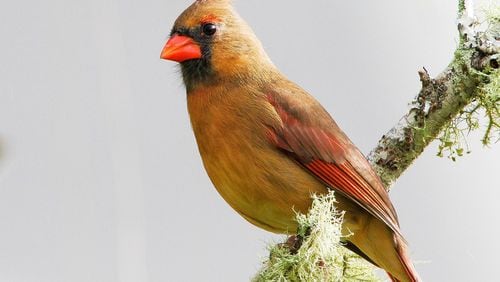I once assumed that every singing bird I heard was a male. As any bird lover knows, male songbirds sing lustily in spring to attract females and defend territory.
About the only exception, I thought, was the female cardinal. During the nesting season, she often sings in a soft, flute-like voice to her bright red mate.
I now know, though, that the female cardinal is not an exception. Females in dozens of other songbird species also sing regularly, say two ornithologists who want to spread the word that there’s a world of female birdsong out there — if only we’d listen.
“I was surprised to learn that (female birdsong) was more common than I expected,” said biologist Lauryn Benedict at the University of Northern Colorado. She and fellow researcher Karan Odom of Cornell University published their commentary last month in the ornithology journal Auk.
Numerous bird surveys, birdsong recordings and other research have documented singing by females in hundreds of bird species around the world, mostly in the tropics.
In North America, females of at least 140 species are known to sing, say researchers. More than 40 of them nest in Georgia — including tufted titmice, Carolina chickadees, mockingbirds, Eastern towhees and several warbler species.
Odom and Benedict say it’s important to distinguish between male and female songsters. For instance, biologists often locate and identify birds by song during breeding bird surveys, which help determine the population status of various species. Assuming all singing birds are males could mislead wildlife managers about the populations.
“If you hear a bird singing, do not assume it’s a male,” Odom said.
A possible glitch: In many bird species (unlike cardinals), males and females look alike, making it difficult to tell which gender is singing.
To learn how you can help in the Female Bird Song Project, visit: http://femalebirdsong.org/.
IN THE SKY: From David Dundee, Tellus Science Museum astronomer: The moon will be new tomorrow. Bright shining Venus is in the west just after dark and sets about an hour later. It will appear near the moon Tuesday night. Jupiter rises in the east about an hour before midnight. Mars and Saturn rise in the east about an hour after midnight.






